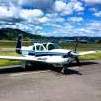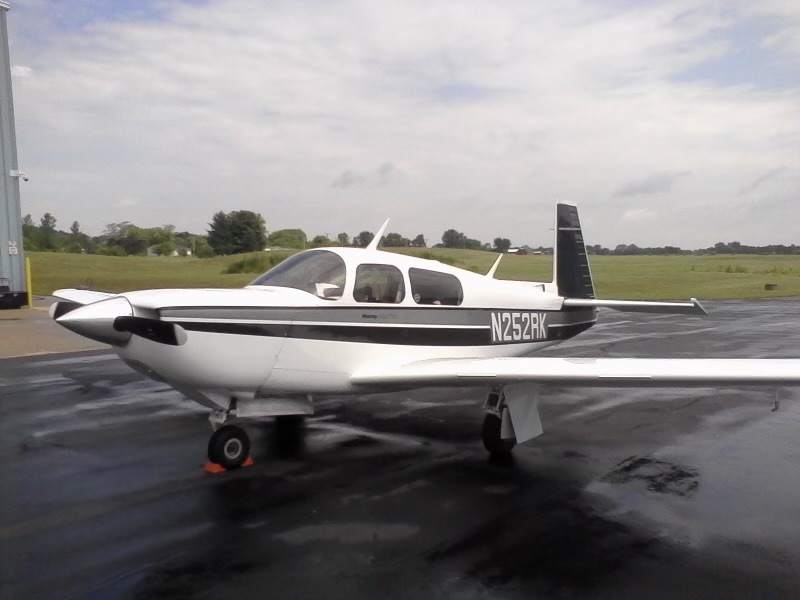-
Posts
5,740 -
Joined
-
Last visited
-
Days Won
28
Content Type
Profiles
Forums
Blogs
Gallery
Downloads
Media Demo
Events
Everything posted by Ragsf15e
-

Owner Assisted Avionics Install
Ragsf15e replied to Baker Avionics's topic in Avionics/Panel Discussion
I’m in Spokane... wanna do 2xG5s. Easier here or at your place? -
They answered right away. Still sounds really good to me if their timeline is accurate. Here’s my email to them and then their response... I’m really interested in the AV30 certified. Can you tell me what external connections are required? Just power, pitot, static? Are the oat and gps optional? Also, what happens if it loses pitot/static (like pitot tube ices)... does the attitude still function or does it fail? Thanks! Hi Drew, The only required connections are power and pitot/static. The OAT, GPS and Audio Outputs are all optional. When loss of pitot/static occurs, there may be slight pitch errors during takeoff and landing (roll-out on the runway). Perhaps slightly degraded performance in flight, but it’s very subtle. Also, airspeed or altitude will be incorrect, as will related TAS and DALT computations.
-
I believe it doesn’t work well as an AOA, however, it doesn’t have any connection to a gps, waas or otherwise. It’s using the ahrs, pitot, and static. There is no gps internal or connection to external.
-
They aren’t building new airplanes with vacuum systems. Having separate electric ADIs with independent battery backup makes sense if you’re very unlucky and one fails. I definitely don’t fault you for keeping the vacuum adi. It is a completely different (non electric) system, but I’d make the vacuum ADI the backup and have a G5 or similar as primary as its mtbf is much higher. Also less likely to give you faulty information like a vacuum adi. G5 either works or red X itself. Pretty clear in the unlikely event that you need to switch to backup.
-
To each their own. My thought is that the vacuum is the least reliable system on the airplane. A dual g5 system has its own backup, or an electric adi if you really want something separate. But you’re the one flying the airplane and spending the $$, so definitely make it what you want!
-
Nice! Did you already have a G5 adi? Tell me you didn’t do all that and keep a vacuum adi??? The g5 hsi is really a nice backup when connected to a g5 adi for not much extra $$. or did you have to keep vacuum adi for an autopilot? also did you flush mount g5? Mine doesn’t have enough room between gages to mount the flush brackets without a new panel... did they have to cut you a new one?
-
I’ve been considering doing 1 G5 just to get rid of my vacuum system (mechanical King HSI works fine for now), but I’d really like to prevent “mission creep” on this very minor panel upgrade. Next thing I know it’ll look like Marauders or DonKaye! Anyway, G5 requires enough space for a big square or cutting panel for flush mount (not room for flush mount bracket in my panel - instruments too close together). The $$ of g5 seems good although the av30 is half price. I’m starting to think AV30 makes more sense for super easy swap to enable getting rid of vacuum. Anyone know what happens if it loses pitot static? It doesn’t have gps interface, does it go “red x” like old Aspens if you get pitot ice?
-

A&P Says "Oh no a Mooney?!!"
Ragsf15e replied to Tcraft938's topic in Vintage Mooneys (pre-J models)
Find a mechanic with an open mind or Mooney experience. Either way will be fine. It’s a Volkswagon with wings. It’s not complicated. -
+1 interested in quality new seal here.
-
Two quick thoughts... completely unrelated: 1. Cold flying at smaller airports... watch the snow vs wingtips carefully! Snowplow drivers seem to also be high wing flyers in my neck of the woods! I literally had to shutdown and shovel just off the runway once and couldn’t even get close to the cheap fuel I had actually come for! Small airport, city plow. 2. Without getting into huge lop discussion, 50 LOP might be good at ~75% or 80% power to keep you out of red box/fin. As power gets lower, box gets smaller and disappears ~65%. So as Shadrack and Carusoaum said... at 65% power you can run much closer (or at) peak and get better performance while still lop. At higher power settings (usually down low altitude), 50 lop might be more appropriate.
-
Yep, potentially that’s true. Mine buffets pretty good before the nose really falls off. Much easier recovery if you do it at the first big buffet. Who’s to say what was the last big buffet or full stall. Tough to put in words on a post too. We may just be describing differently.
-
There is definitely a difference in my M20F when I stall it power on (~60%+) vs power off. If the ball is centered it’s relatively straightforward either way and relatively straight ahead, but much quicker and more sensitive to small yaw with the power on. I have purposely stalled it with power on and feet off the rudders just so I’d know how quickly it would turn bad. It was quick. Very much like a half snap roll. It got my attention and I was flying a fully aerobatic airplane at work at the time. It did recover very nicely with power reduction (just to help me get rid of yaw) slight push on the controls and a coordinated roll to wings level. One great thing about the mooney is that it really talks to you before stalling. Stall horn screaming, buffet, forces me to pull back very hard to get it to actually stall. So to the OP... how certain were you that it’s really well coordinated and rigged?
-
Did you have the vent open mixing with the heat - ie both knobs pulled? If it’s real cold out, I have to leave the heat on full and then slightly modulate the vent to get the right temp. All manually controlled air (left pilot knee vent and top vents) closed. I’m usually good down to about -15c in cruise. Never had my engine temps that low though... lean in the climb to target egt? Cowl flaps closed? Its cold in Washington, but not that cold!
-
I too use FF basic but my aural warnings work... maybe delve into the settings and make sure they’re on? They aren’t part of the geo rectified charts. Your ipad will need a gps source however.
-
Is there anyway to keep the bottom door support bracket from tearing up the seal when you close the door? Mine is all torn away where that bracket attaches to the door. I would think door mounted seal would do the same?
-
Longtime foreflight user and love the app but also concerned about pricing. I even fly commercially and refuse to spend someone else’s money on performance pro. One thing that really bothered me as a cfi is that their Navlog in basic and pro doesn’t have leg fuel for each waypoint, only a flight total. Performance pro does... i need to pay $300 for a basic fuel planning function that every cfi and examiner should be asking for?! They do have leg fuel on the simplified Navlog above the moving map, but only performance pro can have it on the printable, “full” Navlog in Flights, seems weird.
-

Seat Back Position Adjustment Cam
Ragsf15e replied to David_H's topic in Vintage Mooneys (pre-J models)
I would be in the market for a set of those if someone decided to make more. Mine are sort of serviceable if set just right, but not so good when your seat suddenly reclines as you rotate on takeoff! -
Guys, couple questions I have that might help the OP too... what kind of useful load, speed, and cruise fuel burn might you expect from a fiki O2, Bravo, or 252? Are the seating and passenger areas really the same size as the “mid bodies”?! So my F has same seating room as an O2?
-

GTX345 not playing nice with Foreflight
Ragsf15e replied to wrench's topic in Avionics/Panel Discussion
Garmin website says attitude may be turned off for some installations (helos)... is your installation shop sure attitude isn’t disabled?? Probably only a setting they can get to. -

GTX345 not playing nice with Foreflight
Ragsf15e replied to wrench's topic in Avionics/Panel Discussion
Does a 345r Bluetooth to an iPad with position, adsb in, attitude? Most of the above discussion was above the non-r 345. -
Or just stay real current with partial panel ops because you’re still required to have those instruments.
-

Remote Compass Flux Valve Location
Ragsf15e replied to Old Chub's topic in Vintage Mooneys (pre-J models)
I have a King HSI. Flux dome as you described is in the tail, maybe 2’ aft of my battery. Right next to my AP pitch servo. Perfect location. Roll servo is in my left wing. I hear right wing is a good place for one if your strobes are well grounded. -
Nice. Now if we could just count on all the FSDOs being reasonable, that would be great!
-
Panel looks great, and probably very reliable, but maybe not meeting the letter of the law for a backup AI? The G5 STC says it cannot be a required backup... not saying I agree, but...
-
Well that takes away the major benefit of the E5 over the 2xG5s... no upgrading the E5 in the future unless you reinstall an appropriate backup AI or make it a dual Aspen setup ($$). IE, can’t install the E5 now and upgrade it to the HSI and ADSB in/out when the $$ is available without other significant changes. Dang, guess I’m back to the 2xG5s.



